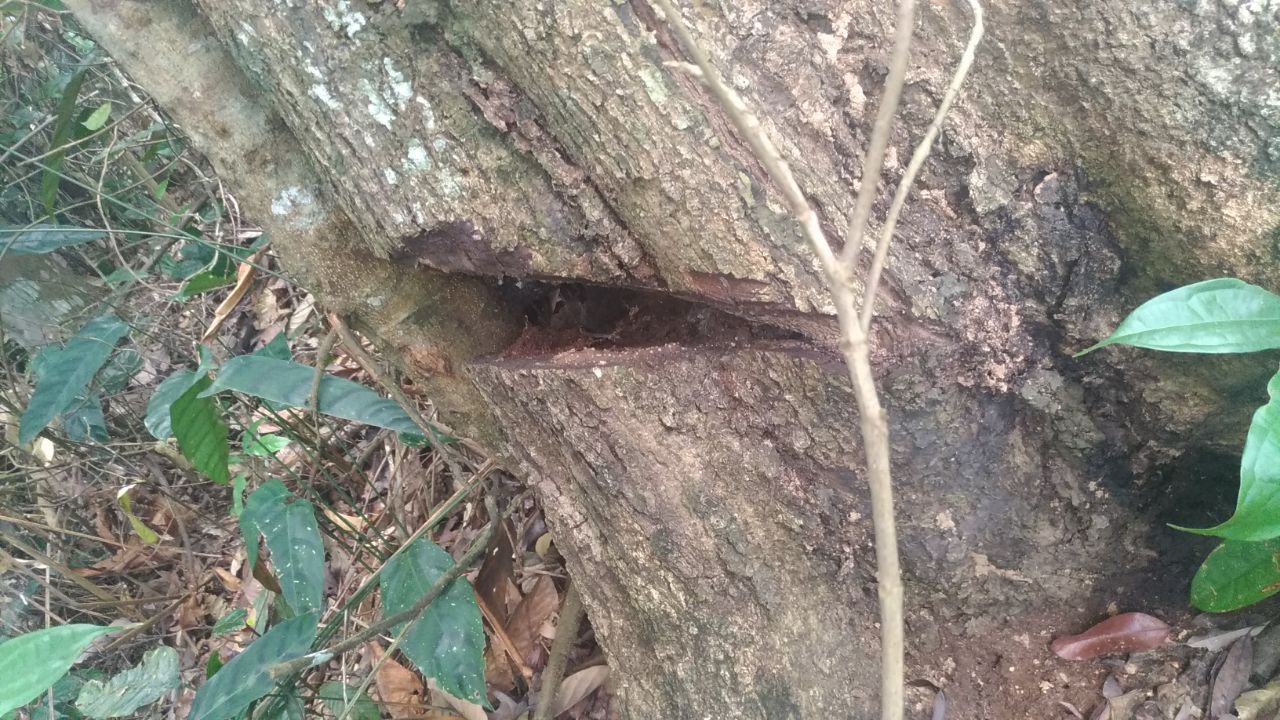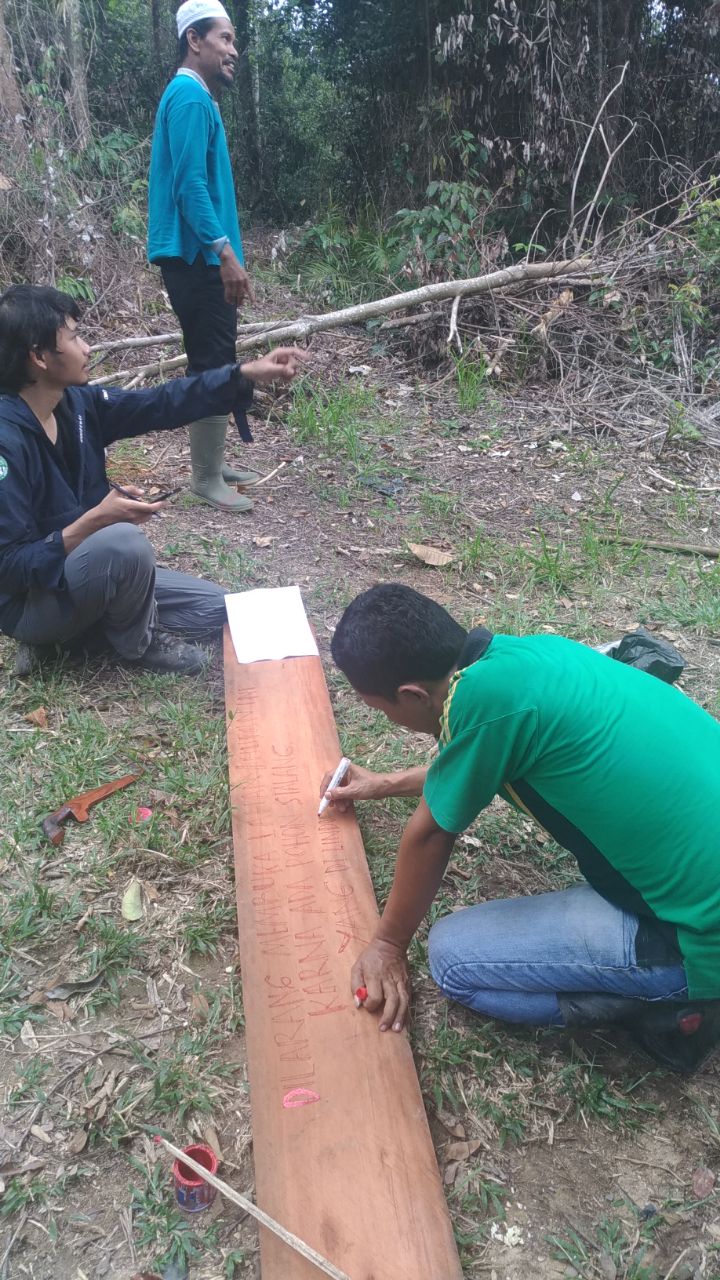Between Forest and Plantation
By Thontowi Suhada, Young Researcher, WRI Indonesia
At noon, my colleague, Dwiki, and I were ready in front of the gate of the oil palm plantation. We planned to do some initial research related to land management in a protected forest landscape in Riau Province. Along with Mr. Icam, a village secretary, and Mr. Wafisri, a traditional elder, we were verifying the findings of remote sensing that indicated an area where oil palm plantations and protected forest overlapped.
By motorbike, we explored the plantations to the forest border. The conditions ranged from rocky, muddy roads, to descents and climbs that seemed unthinkable for conventional motorbikes to pass. Sitting at the back, I sometimes had to get off the motorbike when it was not strong enough to go uphill, or even lift the motorbike when it was stuck in the mud. It turns out that piggybacking is not always just sitting pretty.
Seeing how challenging the roads were, we didn't expect to see oil palm plantations. With the hilly contours of the land, we couldn’t imagine how difficult it must be for the workers to transport their harvested palm fruit. Was the promise of palm oil so great that they were willing to take such a difficult path? Or perhaps it was so difficult to find alternative income, they were dependent on palm oil?
According to local people, this hill was once a dense forest. But as plantation land became scarcer and more expensive, the community started selling the forest land or using it for plantations; either gambier, rubber, or palm. Attracting a high price and in high demand, palm trees have become the main feature of these lands, to this day.

Figure 2. Trees that are half cut and left by illegal loggers. Photo by: Thontowi Suhada
At one point, our motorbike couldn't go any further and we decided to continue our journey on foot. The vegetation began to change, from the palm oil landscape to the forest landscape. From the above satellite image, this area still had good forest cover. But when we entered the forest and saw it from below, it turned out to be in very poor condition.
Many large trees had been uprooted. Some were left in a half-cut condition because the center of the tree was damaged. We also found some wooden planks ready to be transported. What was even sadder was that the felled trees were sialang trees, which were protected by law and custom. Sialang trees are inhabited by swarms of bees and according to custom, inhabited by spirits. People who know this will not cut down the trees because apart from being protected by customary law and mystical beliefs, they also have a higher economic value if allowed to grow. One sialang tree can contain more than 15 forest bee hives, which can produce 5-10 liters of honey per hive.

Figure 3. Mr. Icam is making a no-logging sign. Photo by: Thontowi Suhada
Seeing the condition of the forest, Mr. Wafisri and Mr. Icam took the initiative to make a sign from wooden boards that had not been removed by the illegal loggers. Using markers and paints they wrote: "It is Forbidden to Open this Land/Forest Because there are Sialang Trees that are Protected". It was a small but interesting example of how village officials and indigenous peoples work together to protect the forest in their area.
Forest encroachment and unsustainable land-use change are actually the results of chronic neglect and the absence of law enforcement. As the closest stakeholders to the forest, the village government and traditional stakeholders have a great opportunity to maintain forest sustainability and sustainable land use. If developed and directed properly, cooperation between the two parties could protect the forest from both sides, both formal and customary law. However, if this neglect continues, it is only a matter of time before these hills and forests disappear and turn into plantations.